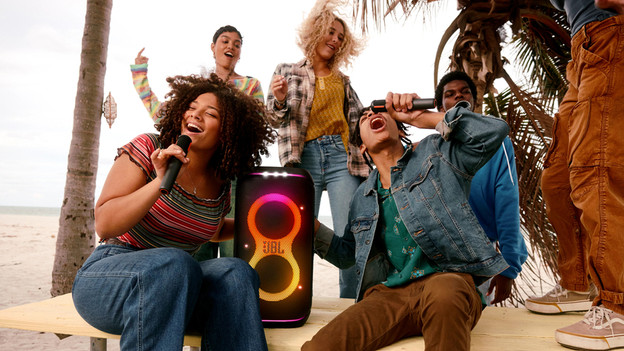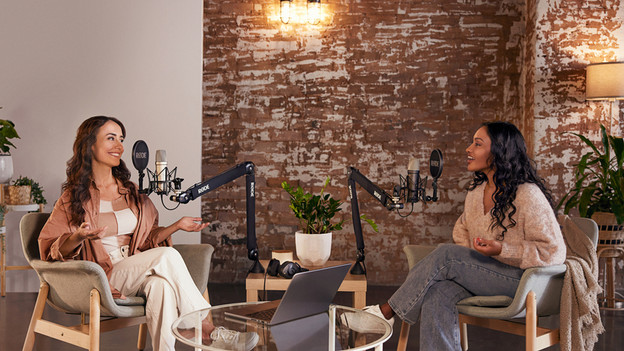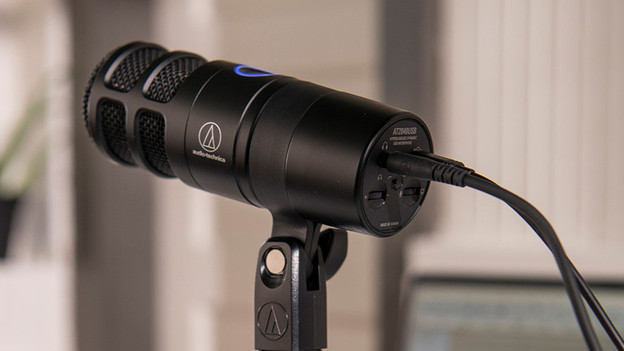
Written by Linde
Edited on
27 August 2024
·
13:13
How do you choose the right microphone?
A microphone turns an acoustic signal into an electronic signal. You can hear this as an amplified signal during a concert or as audio recordings. Which microphone you need depends your situation. For recording singing and instruments, you'll need a different microphone than for podcasts. We'll explain what type of microphone to use for which situation in this article.

Choosing a microphone
Clearly think about what you want to use the microphone for beforehand. Do you want to amplify live music or record conversations? Ask yourself the following questions and find out which microphone suits you:
- Do you want to record singing and instruments?
- Do you want to sing in front of a live audience?
- Do you want to record podcasts?
- Do you want to be clearly understandable during online meetings?
- Do you have a condenser or dynamic microphone?
- Which directional characteristics do you need?
- Which connector do you need?

Do you want to record singing and instruments?
You can use studio microphones to record singing and instruments. They have a wide frequency range, so they record more detailed sound. That way, your singing and instrument recordings sound lifelike. These microphones are also directional. This means that they're sensitive to sound from a certain side. They only record sound on this side, so you won't hear any unwanted background noise.

Do you want to sing in front of a live audience?
With karaoke microphones, you can sing live for your friends. You can connect these microphones to a speaker via the microphone and guitar input or do so wirelessly. You can hear your voice through the speaker. When you play music, you can sing along to your favorite songs. With a microphone set, you can sing together with friends during a karaoke night.

Do you want to record podcasts?
These microphones clearly record your voice. They often have cardioid directional characteristics. This means that it records sound on 1 side. This way, you don't record much background noise and you're clearly audible. The microphones are often in a stand, so they're straight in front of you. If you don't want to hear breathing noises or sharp letter sounds in your recordings, choose a microphone with a pop filter. This filter reduces these noises.

Do you want to be clearly understandable during online meetings?
Thanks to the 360-degree coverage, conference microphones record sound from all sides. This way, it doesn't matter which side of the microphone you're on. Almost all our conference microphones have noise suppression. This technology removes background noise. It won't record other voices in a busy rooms. You'll remain clearly understandable during an online meeting this way. They also have a mute function. Turn this on when you're not talking so the meeting stays orderly.

Do you need a condenser microphone?
There's a thin membrane in a condenser microphone that vibrates really quickly. It turns these vibrations into signals, so you can hear sound. That way, you can quickly hear background noise. Thanks to the thin membrane, the frequency range is wide so you can record very detailed audio. This microphone doesn't warp the sound much, so your recording sounds lifelike. You can also use it for acoustic instrument recordings or singing this way.

Do you need a dynamic microphone?
Dynamic microphones are simple in design. Thanks to this simple design, they can handle different temperatures, moisture, and sound pressure well and can take a hit. The microphone warps the sound, so the recording doesn't sound exactly like it sounded live. That's why you mostly use these microphones for recording singing, drums, and electric guitar.

Which directional characteristics do you need?
Microphones have directional characteristics. This tells you which side of the microphone is sensitive to sound. Common characteristics are: omnidirectional, cardioid and bidirectional.
- Omnidirectional: an omnidirectional microphone is equally sensitive on each side. This is useful if you also want to record ambient noise.
- Cardioid: the cardioid directional characteristics are a lot more sensitive at the front than at the back. This is useful if you don't want to record ambient noise.
- Bidirectional: a bidirectional microphone is equally sensitive at the front and back, but a lot less sensitive on the sides. For example, use this microphone during interviews and record the conversation on both sides, without unwanted background noise from the sides.

Which connector do you need?
The standard microphone connector is XLR. There are also microphones with a jack or USB connector. Sound equipment such as a mixer or audio interface often have XLR and jack. Do you want to record via a computer without the use of other equipment? A USB microphone is the best solution. These microphones are dynamic and have a condenser. They're often used for podcasts, voice overs, and radio.
